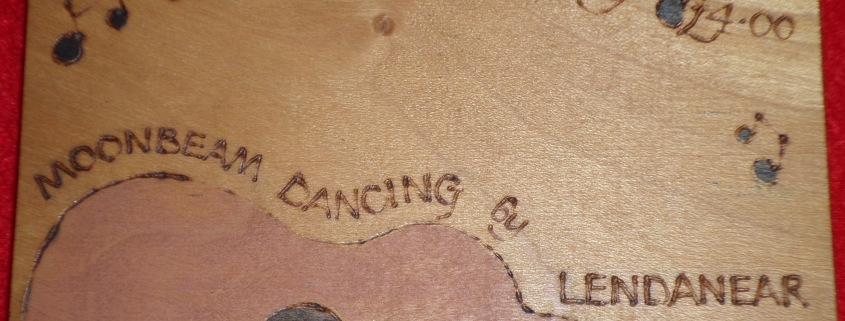Day One of The Lendanear To Song in print Festival presented by Sidetracks And Detours WRITERS FLIPPING FORMATS
Day One of The Lendanear To Song in print Festival presented by Lendanaear WRITERS FLIPPING FORMATS by Norman Warwick
It seemed like I had found the answer to my question of what is a serial novel with my first tap of a Google button, though I knew that the various other search engines might have offered different responses. Nevertheless the answer offered found at the site headed The Serial Novel: A Brief History with 30 Examples [Infographic] (booksonthewall.com) and posted by Andrea Schlottman seemed well informed and made perfect sense, I thought.
´A serial novel is a work of fiction that is published in sequential pieces called instalments,´ its opening sentence told me. Well, Duh.
These instalments can be published at nearly any interval for nearly any period of time, though weekly and monthly instalments are most typical. Serialised novels have traditionally been published by literary magazines, newspapers, and other periodicals.´
So far, the above information pretty much confirmed my my own ideas, but then the article revealed that, in fact, Serial, the breakout hit podcast got its name from this style of publishing a story in instalments. That suddenly made the whole idea feel a lot more contemporary and I began to consider that Colin might be on to something.

Some serial novels, such as The Woman In Whiteby Wilkie Collins were written specifically for that format, said booksonthewall.com while others, ´like parts of Middlemarch by George Eliot´, were originally intended to be a longer works, but were later broken up for serialization. (Eliot actually did not want to serialize Middlemarch, but her work was simply too long for a standard three-volume publication.)
I learned from the post that in the nineteenth century and early to mid-twentieth century, serialization was an immensely popular form of publishing.
´Publishing works in serialized form gave authors a much wider readership´, the essay contested, ´since even poorer readers could afford short volumes. Publishers of course enjoyed the corresponding greater profits. After first publishing in serial format, many authors would revise the work before publishing it to be sold as a complete novel.´

My previous understanding of the genre was that Charles Dickens (right) was to be credited with beginning the serial publishing craze with The Posthumous Papers Of The Pickwick Club (more frequently called The Pickwick Papers), published over nineteen issues from March 1836 to October 1837.
´Charles Dickens wrote most of The Pickwick Papers under his pseudonym Boz,´ explained booksonthewall.com ´a name he had used to much success with an earlier serial work, Sketches by Boz.

The Pickwick Papers (left) follows an elderly gentlemen named Samuel Pickwick as he journeys around the British countryside. In this work, Dickens established his now-iconic humorous voice, exaggerated characters, and piercing gaze into the various foibles of Victorian English society.´
The whole text of The Pickwick Papers can actually be read for free on Project Gutenberg, which even after only a cursory glance seems set to become one of my favourite literary websites.
Dickens did not stop writing serial fiction after the success of Sketches by Boz and The Pickwick Papers. In fact, he published all of his novels, including Great Expectations and Little Dorrit, first in serial form.
He went on to edit several literary magazines (many of which focused on serial publications) and even publish his own literary magazine, All The Year Round, which featured many serial novels that are now famous.
booksonthewall.com then stripped Dickens of his glory by revealing that ´serial publishing had existed long before long before he made it fashionable.
In fact, the site listed many authors, who wrote most of their works in serial format. I was surprised to see thirty titles on the list the site reproduced but Í was even more astonished to read that only one work per author had been chosen for what the writer of the post acknowledged was a ´brief and oh-so-incomplete timeline of serial novels.´
The list began with The Count of Monte Christo, Alexandre Dumas´ novel of 1844 and included several surprising names, such as The Phantom Of The Opera by Gustav Leroux, Ulyssees by James Joyce and even A Farewell To Arms by Hemingway. Why I have inserted the even in that previous sentence I´m not really sure: it just feel like a very modern title.

The list ended, of course (though whether or not novels in serials forms as a genre also ended then is a moot point) with Fear And Loathing In Las Vegas by Hunter S Thompson (right) in 1971, more than 120 years later than Dumas.
I was beginning, by this time, to count the advantages of publishing in serial form, figuring there must be benefits to both producers and readers alike. However I learned from booksonthewall.com that the format came with a handful of disadvantages as well. Finding the nub of such an argument, though, is quite difficult as many criticisms of serial authors like Charles Dickens could be interpreted as much as a criticism of the author as of the art form.
It is true that the site reported complaints including excessively long texts, overly grand dramatizations. too much repetition, too many exaggerated or flat characters (come on guys, you can´t have it both ways) and of plot lines that don’t make sense when viewed as a whole.
I remember, though, that I have always felt Wilkie Collins’ The Woman In White, was an unsatisfactory ´story´ and I think I´m right in saying it didn´t enjoy a long run when produced for the theatre a few years ago, though to be fair I can´t recall what the theatre critics (and audiences) disliked.
The site reminded me that as ´one of the first ghost and detective novels, The Woman In White In White was originally serialized in 1859 in Dickens’ magazine All the Year Round. The booksonthewall.com essayist remember the book ´for dramatic, cliffhanging chapter endings´: hallmarks, I suppose, of serial fiction. Nevertheless, she thoughtThe denoument of the book, somehow felt convoluted and author-led rather than led by character, or even of plot.´
Regardless of such well-founded criticisms, however, she thinks serial novels are worth the read, both in their original serial formats and their revised final volumes. And comparing the two versions is another fascinating story.
Perhaps the art form has grown, or those who work in it have honed their craft, and so for authors like Colin Lever, with an episodic book that lends itself to serialisation, it is surely worth a look to see if that book would work in the brave new world of serial fiction. The problem, though, is that the world of serial fiction. at first glance, seems neither brave nor new. And the genre, perhaps, is no longer seen as modern.

Chapters, episodes and serial fiction seems to have been eschewed in favour of short stories. Many acclaimed authors do write in magazines like The New Yorker for instance but most, like Zadie Smith (left) and Safran Foer are really submitting short stories and essays.
Whilst it is now rare for contemporary authors of traditional, heavyweight fiction to publish work as a serial novel, there are still a few notable authors who have recently published works in serial form.
In 1984 Tom Wolfe saw The Bonfire Of The Vanities , published in serial form in Rolling Stone and Stephen King famously published The Green Mile in 1996as six paperback volumes
Michael Chabon had Gentlemen Of The Road published in New York Times Magazine in 2007 and Chris Ware has more recently had Jimmy Corrigan, The Smartest Kid On Earth, published in Newcity newspaper
Some writers though, have not only published in serial format, but have done so in the modern on-line style rather than in the traditional, and perhaps perceived as old fashioned, print form. Margaret Atwood, for instance, self-published Positron online.
Of further interest to writers like Colin Lever and the prolific and young science fiction writer, Louis Brierley, might be the interesting psuedo-serialization today of The Martian by Andy Weir. The author originally wrote and published chapters of The Martian on his personal blog. He gained a following of fellow space enthusiasts who helped him correct scientific inaccuracies in his draft as he went along. In the self-publishing of The Martian, Weir blended the serializing with the revising.
Andrea Schlottman feels, she said, ´that over the past few years, there has seemed to be a growing consensus that the serial novel is making—or is soon due to make—a comeback´.
And it might seem inevitable that there will be more successful cases like Andy Weir’s as publishing moves from centralized traditional publishing houses to self-publishing, especially online. Moreover, the growth of online literary magazines and sequential publishing platforms like Wattpad will almost certainly increase the interest in, and availability of, serial literature, whether self-published or not.
Much like the Victorian English audience’s anticipation of Dickens’ next instalment, it looks like we’ll just have to wait and see.´
I really enjoyed the post right up until that dum diddy dum dum Eastenders thud at the end !
Perhaps a response on the same booksonthewall.com site might give us some clue as to the direction in which serial novels are heading. Robert Barlow contributed further to this on-line discussion about serialised novels.
´A lot of people, when looking at serialized novels´, he pointed out, ´tend to look towards published fiction, where serial novels usually gather their largest audience´.
So while it might seem that serialization in novels fell out of favour, Mr. Barlow argues that serialization in film (in the form of television) and serialization in drawing (in the form of comics) has grown to take its place. If you look at the criticism of Dickens serialization in books, you can see that it fits the most common criticism of long-running TV shows: repetition, a clear lack of forethought, and characters designed to momentarily grab attention (but not to hold it). As written serials have made a come-back, the lessons learned from TV have been put into practice in ways that make serials stand out against most other forms of literature.´
Barlow brings up the rise of the web-serial.
´With platforms like Patreon democratizing payment,´ he says, ´it’s become much more viable for authors to release work on a weekly or monthly basis. Furthermore, because Patreon handles the commitment of the regular payment, it’s more important for an author to cast a wide net for readers and provide emotional payoff than it is to keep the readers they have strung along week-to-week – once someone decides to pay an author, they have to make a conscious decision to stop paying an author.’
Robert Barlow believes that might be the reason that a lot of web authors choose to publish their work for free, and focus instead purely on growing the size of their audience. The market for this sort of fiction has quadrupled over the last five years, and Mr. Barlow therefore thinks the trend will continue.

Writers who, like my musical colleague, Colin Lever (right), have enjoyed success with traditionally published and marketed books as well as on-line editions and those marketed through the likes of Amazon obviously should take due diligence in verifying the current state of serial fiction and Robert Barlow recommends that they follow his link http://topwebfiction.com/?days=10000 to the top user-ranked choices for web-serials over the last several years. They won´t all be classics, as he says, but they will be typical of the form and will give authors thinking of testing the genre the chance to see how their own work might benefit from following that same route.
So, as ever, a pebble dropped in a puddle of water seems to have sent ripples rolling high and strong enough for a surfer dude to hang a perfect ten.
photo 5 hunter s Thompson From The Count Of Monte Christo to Fear And Loathing In Las Vegas, I had passed books and authors I had read and loved but the name that almost had me falling off my board was that of Hunter S Thompson, who was an author of my formative youth. There seemed to be a stretch of a few years in my life when his was the only writing my friends and I talked about. There was something of the anti-establishment and he was beloved by those of us who thought we were the in-crowd..
Hunter Stockton Thompson (July 18, 1937 – February 20, 2005) was an American journalist and author, and the founder of the gonzo journalism movement. He first rose to prominence with the publication of Hell’s Angels (1967), a book for which he spent a year living and riding with the Hells Angels motorcycle club to write a first-hand account of the lives and experiences of its members.
In 1970, he wrote an unconventional magazine feature titled “The Kentucky Derby Is Decadent and Depraved” for Scanlan’s Monthly, which both raised his profile and established him as a writer with who challenged the cultural moirees of the time. He went on to establish his own sub-genre of New Journalism that he called Gonzo, which was essentially an on-going experiment in which the writer becomes a central figure and even a participant in the events of the narrative.
Thompson remains best known for Fear and Loathing in Las Vegas (1971), a book first serialized in Rolling Stone in which he grapples with the implications of what he considered the failure of the sixties counterculture movement. It was adapted on film twice: loosely in Where the Buffalo Roam starring Bill Murray as Thompson in 1980, and directly in 1998 by director Terry Gilliam in a film starring Johnny Depp and Benicio del Toro. The Doonesbury cartoon character Uncle Duke, , who was modelled after Thompson, pens an essay about “my shoplifting conviction” titled “Fear and Loathing at Macy’s Menswear”, a reference to Thompson’s book.
Politically minded, Thompson ran unsuccessfully for sheriff of Pitkin County, Colorado, in 1970 on the Freak Power ticket. His run for sheriff is chronicled in the documentary film Freak Power: The Ballot Or The Bomb. He became well known for his dislike of Richard Nixon, who he claimed represented ´that dark, venal, and incurably violent side of the American character´. He covered Nixon’s 1972 re-election campaign for Rolling Stone and later collected the stories in book form as Fear And Loathing On The Campaign Trail ’72.
Thompson’s output notably declined from the mid-1970s, as he struggled with the consequences of fame, and he complained that he could no longer merely report on events, as he was too easily recognized. He was also known for his lifelong use of alcohol and illegal narcotics, his love of firearms, and his iconoclastic contempt for authoritarianism. He often remarked: ´I hate to advocate drugs, alcohol, violence, or insanity to anyone, but they’ve always worked for me.´

Meanwhile Colin Lever, of Lendanear, is now also considering re-developing Open Mics (left), his fictional book of an-ageing-never-quite-got-there rock star into a won´t-ever-quite-make- it-back- has- been hero, into a comic strip or graphic novel.
The comic strip has been an essential part of the American newspaper since its first appearance more than 125 years ago. Newspaper comics were often called the ´funnies´ or the ´funny pages´ and quickly became a popular form of entertainment.
Characters like Charlie Brown, Garfield, Blondie, and Dagwood became celebrities in their own right, entertaining generations of people young and old. So, too, in the UK did Andy Capp, Rupert The Bear and Noddy.
Comics did, of course, exist before the strips in newspapers that may first come to mind when you think of the medium. Satirical illustrations (often with a political bent) and caricatures of famous people became popular in Europe in the early eighteenth century. Printers sold inexpensive colour prints lampooning politicians and issues of the day, and exhibitions of these prints were popular attractions in Great Britain and France. British artists William Hogarth and George Townshend were two pioneers of these types of comics.
As political caricatures and standalone illustrations became popular in early 18th-century Europe, artists sought new ways to satisfy demand. The Swiss artist Rodolphe Töpffer is credited with creating the first multi-panel comic in 1827 and the first illustrated book, The Adventures of Obadiah Oldbuck, a decade later. Each of the book’s 40 pages contained several picture panels with accompanying text underneath. It was a big hit in Europe, and in 1842, a version was printed in the U.S. as a newspaper supplement in New York.
As printing technology evolved and allowed publishers to print in large quantities and sell for a nominal cost, humorous illustrations changed as well. In 1859, German poet and artist Wilhelm Busch published caricatures in the newspaper Fliegende Blätter. In 1865, he published a famous comic called Max und Moritz, which chronicled the escapades of two young boys. In the U.S, the first comic with a regular cast of characters, The Little Bears created by Jimmy Swinnerton, appeared in 1892 in the San Francisco Examiner. It was printed in colour and appeared alongside the weather forecast.
Comics and illustrations also played an important role in the history of the U.S. In 1754, Benjamin Franklin created the first editorial cartoon published in an American newspaper. Franklin’s cartoon was an illustration of a snake with a severed head and the printed words Join, Or Die. The cartoon was intended to goad the different colonies into joining what was to become the United States.
By the mid-19th century, mass-circulation magazines became famous for their elaborate illustrations and political cartoons. The American illustrator Thomas Nast was known for his caricatures of politicians and satirical illustrations of contemporary issues like enslavement and corruption in New York City. Nast is also credited with inventing the donkey and elephant symbols that represent the Democratic and Republican parties.

Although several cartoon characters appeared in American newspapers in the early 1890s, the strip The Yellow Kid, created by Richard Outcault (right) , is often cited as the first true comic strip. Initially published in 1895 in New York World, the colour strip was the first to use speech bubbles and a defined series of panels to create comic narratives. Outcault’s creation, which followed the antics of a bald, jug-eared street urchin dressed in a yellow gown, quickly became a hit with readers.

The success of “The Yellow Kid” quickly spawned numerous imitators, including “The Katzenjammer Kids.” In 1912, the New York Evening Journal became the first newspaper to dedicate a whole page to comic strips and single-panel cartoons. Within a decade, long-running cartoons like Gasoline Alley, Popeye, and Little Orphan Annie were appearing in newspapers across the country. By the 1930s, full-colour stand-alone sections dedicated to comics were common in newspapers.

The middle part of the 20th century is considered the golden age of newspaper comics as strips proliferated and papers flourished. Detective Dick Tracy debuted in 1931; Brenda Starr. the first cartoon strip written by a woman, was first published in 1940; Peanuts and Beetle Bailey each arrived in 1950. Other popular comics include Doonesbury (1970), Garfield (1978), Bloom County (1980), and Calvin and Hobbes”(1985).
Today, strips like Zits (1997) and Non Sequitur (2000) entertain readers, joining classics like ´Peanuts.´ which still thrive- However, newspaper circulations have declined disastrously since their peak in 1990, and comic sections have therefore shrunk considerably. or even disappeared altogether. as a result. Thankfully, the internet has become a vibrant alternative for cartoons, giving a platform these days to creations like Dinosaur Comics and xkcd and introducing a whole new generation to the joys of comics.
So, if you´re a writer you can´t get published in traditional book print publishing, you could always try flipping formats, old and new !
Of course lyric and song also offer a platform for serialisation, and we will look later in the week at the work Colin and I have done over the years to create an episodic quality to our music and its characters that allowed us to ´tell´´ songs´ on any of our cds in chronological order and yet each song to stand alone for radio play.

Radio, itself, far from being killed by video, remains a major part of our media and is another platform that facilitates serialisation and no doubt another former colleague of mine, Steve Bewick, will have occasionally serialised his Hot Biscuits jazz programmes. This week his latest broadcast with partner Gary Heywood Everett gives an insight into Simone Manunza‘ creative sounds played by Ain’t Misbehavin’ Jazz Group at Creative Space. The broadcast also has an eclectic mix from GoGo Penguin, Louis Dowdeswell, David Newton and Simon Spillett. If this looks interesting then pass it on and tune in any time 24/07 at www.mixcloud.com/stevebewick
Whilst Steve and Marlene Bewick were here on Lanzarote on holiday recently I subjected them to one of the so-called ´five bums at the bar´ interview, accompnaied by my team of investigative journalists, messrs. Who, What, When, Where and Why. It strikes me now that answers fiven in those interviews naturally become chronological in order, and somewhat episodic in the telling. The fact that they create five episodes are perfect for the format of a five day Festival, We will be back tomorrow with a feature that searches sidetracks and detours for old songs in new settings.

Look out next week for an interview with Steve Bewick and his wife Marlene in two-part serial form !

The prime source for this ARTICLE were
- Gallagher, Brendan. “The 25 Best Sunday Comic Strips of All Time.” Complex.com. 27 January 2013.
- Harvey, R.C. “Outcault, Goddard, the Comics, and the Yellow Kid.” The Comics Journal. 9 June 2016.
- Jennings, Dana. “Old Breakfast Buddies, From Tarzan to Snoopy.” The New York Times. 9 January 2014.
- “History of Cartoons and Comics.” CartoonMuseum.org. Accessed 8 March 2018.
- “Cartooning: Political.” IllustrationHistory.org. Accessed 8 March 2018.
In our occasional re-postings Sidetracks And Detours are confident that we are not only sharing with our readers excellent articles written by experts but are also pointing to informed and informative sites readers will re-visit time and again. Of course, we feel sure our readers will also return to our daily not-for-profit knowing that we seek to provide core original material whilst sometimes spotlighting the best pieces from elsewhere, as we engage with genres and practitioners along all the sidetracks & detours we take.

This article was collated by Norman Warwick, a weekly columnist with Lanzarote Information and owner and editor of this daily blog at Sidetracks And Detours.
Norman has also been a long serving broadcaster, co-presenting the weekly all across the arts programme on Crescent Community Radio for many years with Steve Bewick, and his own show on Sherwood Community Radio. He has been a regular guest on BBC Radio Manchester, BBC Radio Lancashire, BBC Radio Merseyside and BBC Radio Four.
As a published author and poet Norman was a founder member of Lendanear Music, with Colin Lever and Just Poets with Pam McKee, Touchstones Creative Writing Group (for which he was creative writing facilitator for a number of years) with Val Chadwick and all across the arts with Robin Parker.
From Monday to Friday, you will find a daily post here at Sidetracks And Detours and, should you be looking for good reading, over the weekend you can visit our massive but easy to navigate archives of over 500 articles.

The purpose of this daily not-for-profit blog is to deliver news, previews, interviews and reviews from all across the arts to die-hard fans and non- traditional audiences around the world. We are therefore always delighted to receive your own articles here at Sidetracks And Detours. So if you have a favourite artist, event, or venue that you would like to tell us more about just drop a Word document attachment to me at normanwarwick55@gmail.com with a couple of appropriate photographs in a zip folder if you wish. Beiung a not-for-profit organisation we unfortunately cannot pay you but we will always fully attribute any pieces we publish. You therefore might also. like to include a brief autobiography and photograph of yourself in your submission.
We look forward to hearing from you.
Sidetracks And Detours is seeking to join the synergy of organisations that support the arts of whatever genre. We are therefore grateful to all those share information to reach as wide and diverse an audience as possible.
correspondents Michael Higgins
Steve Bewick
Gary Heywood Everett
Steve Cooke
Susana Fondon
Graham Marshall
Peter Pearson
Hot Biscuits Jazz Radio www.fc-radio.co.uk
AllMusic https://www.allmusic.com
feedspot https://www.feedspot.com/?_src=folder
Jazz In Reading https://www.jazzinreading.com
Jazziz https://www.jazziz.com
Ribble Valley Jazz & Blues https://rvjazzandblues.co.uk
Rob Adams Music That´s Going Places
Lanzarote Information https://lanzaroteinformation.co.uk
all across the arts www.allacrossthearts.co.uk
Rochdale Music Society rochdalemusicsociety.org
Lendanear www.lendanearmusic
Agenda Cultura Lanzarote
Larry Yaskiel – writer
The Lanzarote Art Gallery https://lanzaroteartgallery.com
Goodreads https://www.goodreads.
groundup music HOME | GroundUP Music
Maverick https://maverick-country.com
Joni Mitchell newsletter
passenger newsletter
paste mail ins
sheku kanneh mason newsletter
songfacts en.wikipedia.org/wiki/SongFacts




Leave a Reply
Want to join the discussion?Feel free to contribute!